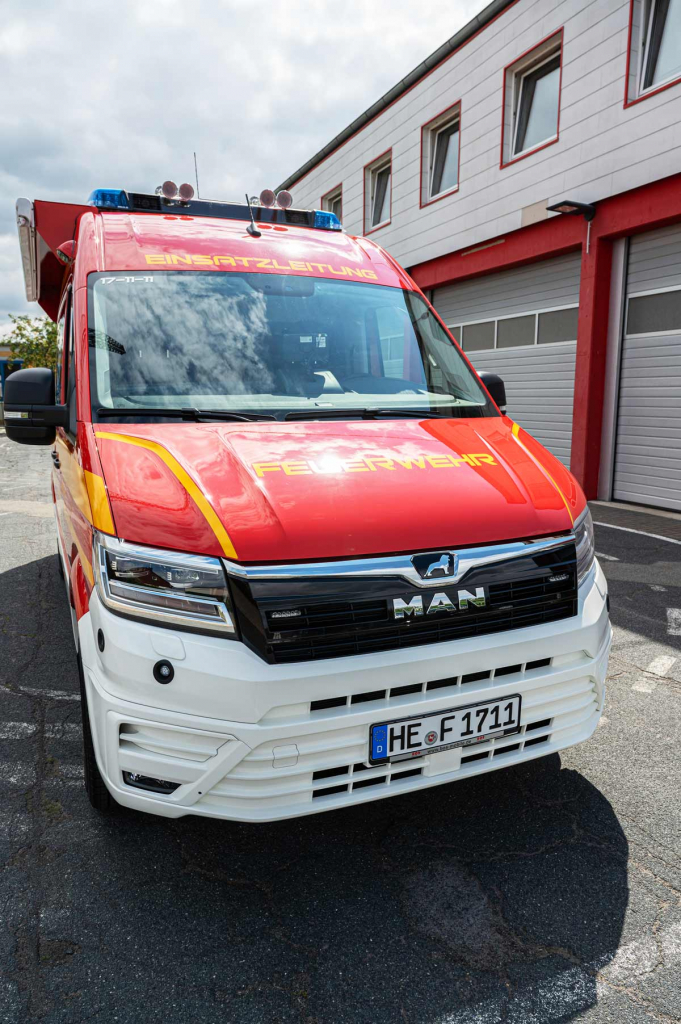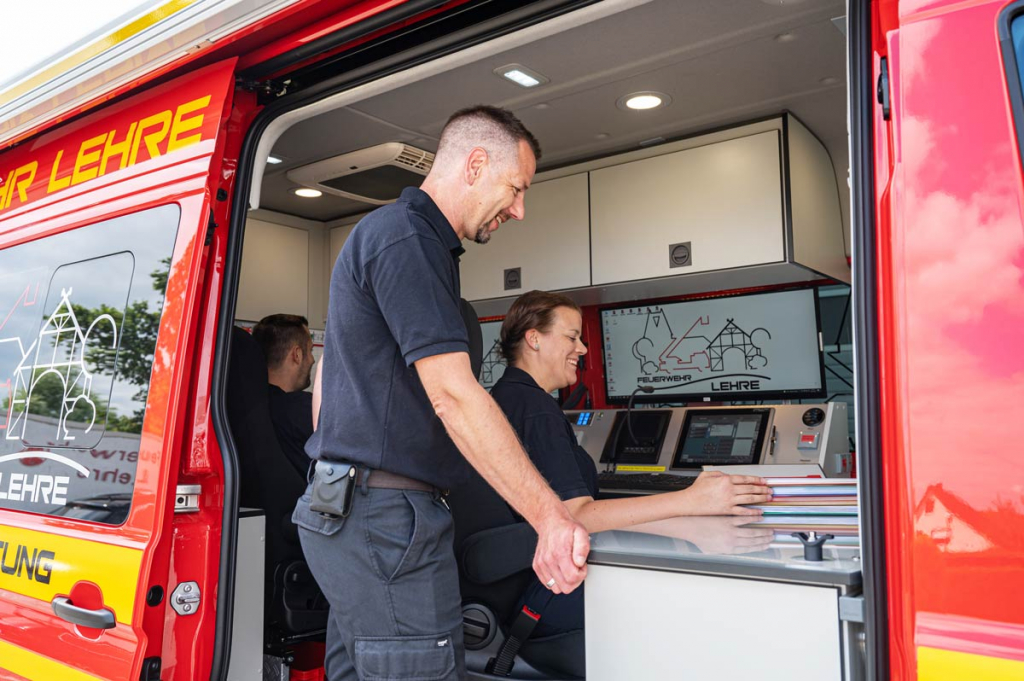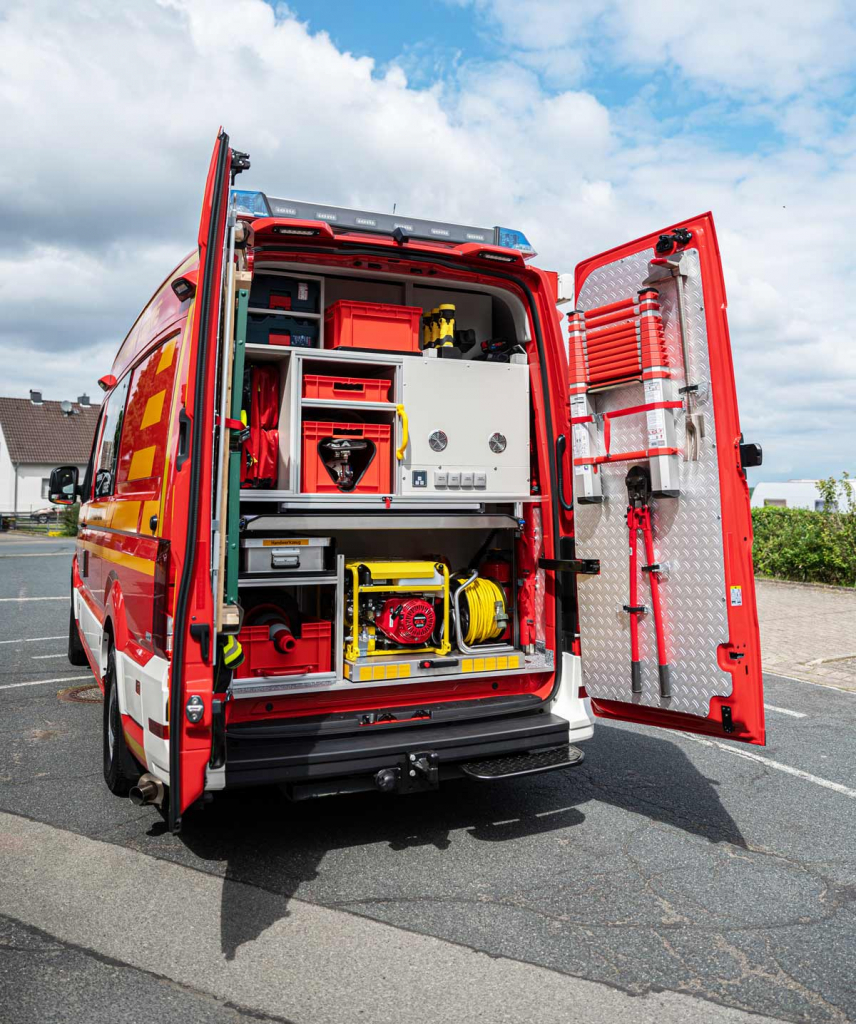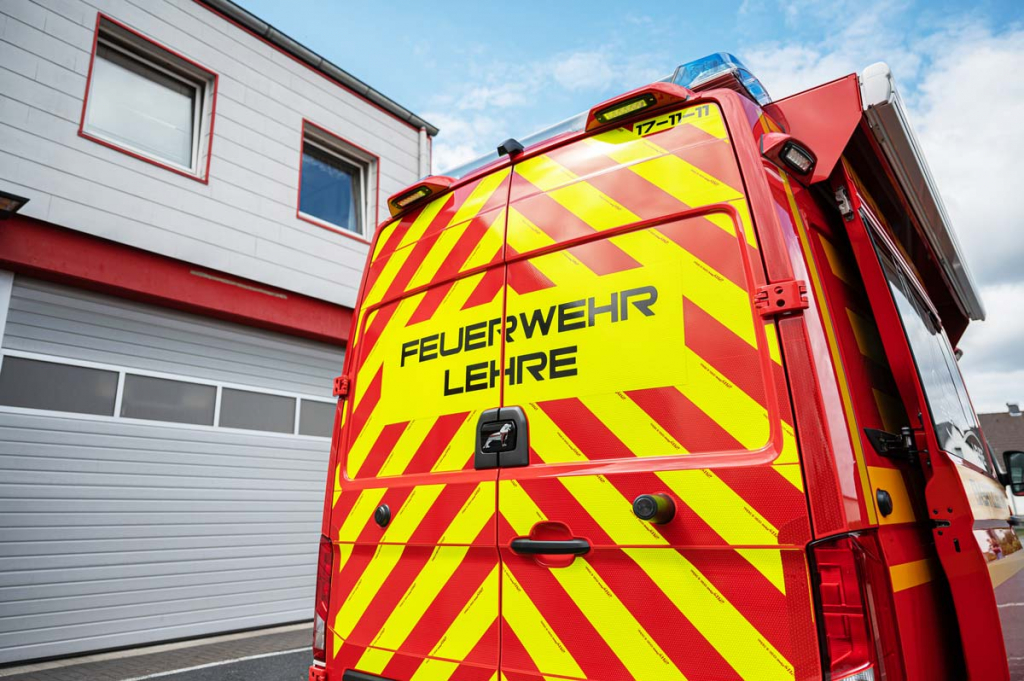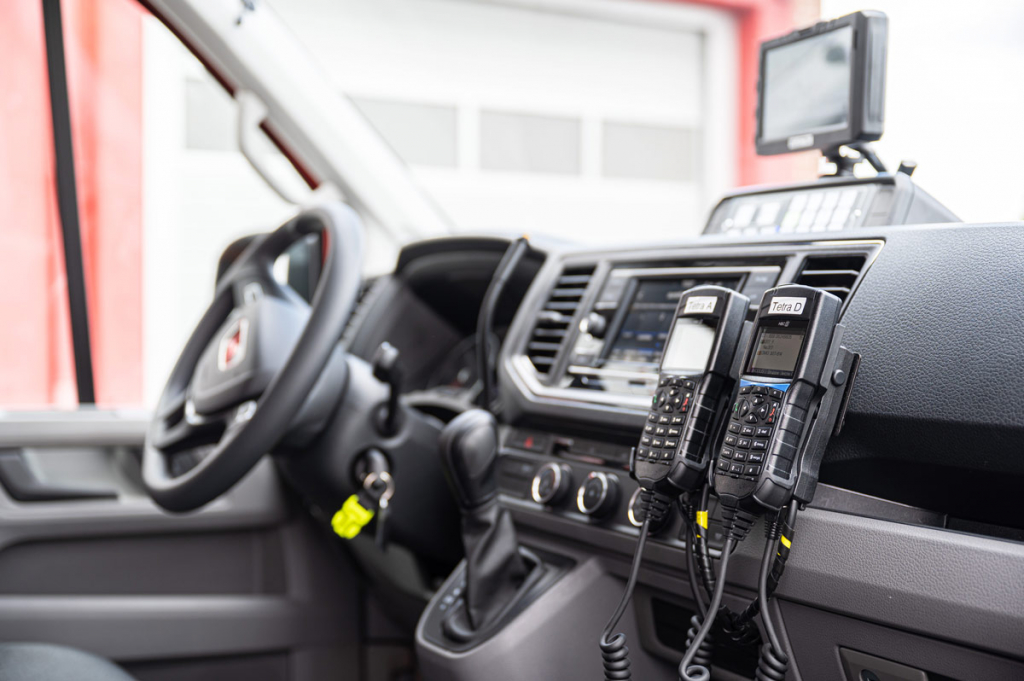
The new number one
This MAN TGE is going to be spearheading fire-fighting operations in the town of Lehre
The Lehre fire brigade are delighted. They’ve found their new number one command vehicle for the fleet, and it’s a MAN TGE. Deputy fire chief Maik Goerke and his team report on the early weeks working with the new truck.
All-wheel drive, top-class workmanship, stylish design – the list of reasons why the Lehre fire brigade wanted a MAN TGE as their command vehicle is a long one. But since the local authority also had a say in the matter, Maik Goerke and his colleagues had to wait a while before they got the green light to acquire it. Now it’s arrived, becoming the fourth MAN in the seven-vehicle fleet operated by the more than 170-year-old Lehre fire brigade. The brigade’s DLK (aerial ladder), LF (fire-fighting truck) and SW (hose truck) vehicles are also based on MAN chassis units.
New vehicle takes the lead
“The ELW 1 is our brigade’s command vehicle,” says Maik Goerke in reference to how the MAN van is deployed. Maik has served as a fire-fighter since 1997 and is now deputy fire chief in Lehre. “The vehicle’s primary role is to transport the incident commander and the station officer to the scene of the incident and, once there, to serve as the base for managing and carrying out the mission. It’s the link between the commanders on-site and the control centre. Its applications are wide-ranging. We have it with us on most of our call-outs.”

The MAN TGE is equipped specially to meet the officers’ operational needs. The smallest MAN model incorporates two high-end work places featuring de-luxe seating comfort and an Idecs communications system, turning the unit virtually into a mobile control centre. Each work place also features a computer, including monitor. “That’s where we work on the documentation, using the Caudex program for example. It allows us to manage even larger-scale missions with ease from inside the MAN van,” explains Jan Wehrstedt, who has been a fire-fighter since 2003 and is now Lehre’s fire chief. He is delighted with the job the command vehicle does:
“We also really like the fact that the driver’s seat and passenger seats are fully adjustable and rotatable, meaning we can use the interior as a meeting room too.” Some of the interior panels have been magnetised so that the crew can fix little notes to them. The interior provides plenty of space for documents, folders, as well as a printer. There’s also room in the rear for accessories such as a generator, a telescopic ladder and the emergency backpack.
Everyone loves the new arrival
Before the new vehicle goes into service in late August, it is currently running trials to familiarise the fire-fighters with all its features and provide the necessary technical training.
“Everyone loves it so far,” reports Maik Goerke. “The design of the vehicle, the space it offers and all its technical features speak for themselves.”Station officer Domenik Eggeling agrees: “I like the fact that the MAN TGE drives like a car. It has a really good chassis, and the amount of space it offers is also impressive. It will provide us with a mobile base to manage all our missions in a relaxed working environment.”
“The state-of-the-art equipment will be a great help on our missions in future. I’m delighted with all the technical features, and with the vehicle in general.”
Station officer Karina Schmalkoke
Maik is very much looking forward to future missions being spearheaded by the new command vehicle: “The MAN TGE is not too big, but still has enough space for the work places and all the technical equipment. Its short wheelbase and off-road chassis mean we can run it on small lanes or forest tracks to access a variety of different locations.” It won’t be the last new arrival from MAN: The Lehre fire brigade is going to be replacing almost all its vehicles over the next few years, and the crews would be delighted if all the new acquisitions were to be MAN-based. “We also have to abide by the tendering rules of course,” Maik admits.
But in view of the essential need for reliable partners in the work of the fire brigade, the chances of more MAN vehicles joining the fleet are definitely bright.

